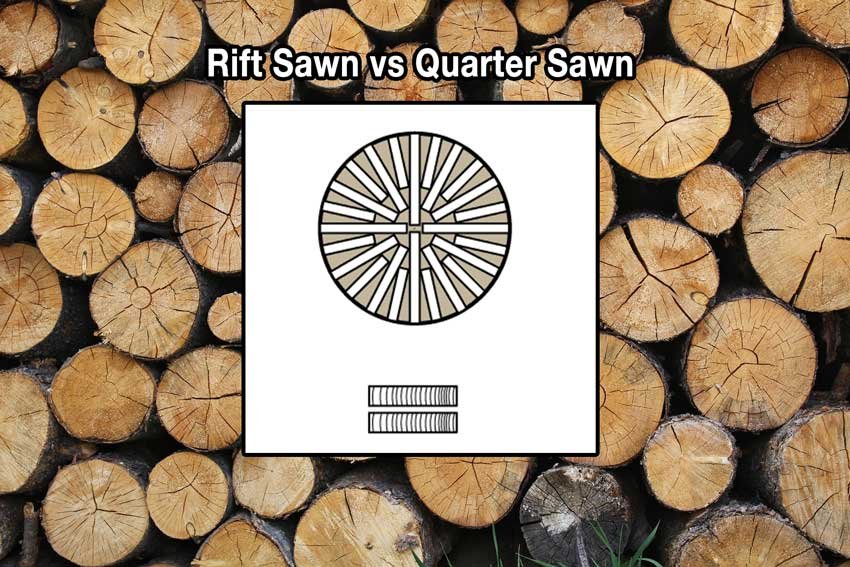
Many people take milled lumber for granted, not realizing there are several types. Each affects how the wood is cut, how it wears, and how it ultimately looks in a finished piece. Rift sawn vs quarter sawn wood or lumber yields a special method of milling that delivers particularly usable, very strong boards. The grains run completely perpendicular to the face of the board. In fact, very few sawmills actually make rift-sawn wood due to the waste generated by the cut.
What is Rift Sawn Lumber?
Rift sawn boards are essentially choice cuts from a quarter sawn milling method. To actually set out and make rift-sawn lumber directly would waste a considerable amount of the original tree. Each piece gets cut towards the center. The method seems overly difficult and produces fewer boards than either quarter-sawn wood or rip sawn and plain-sawn milling.
Rift Sawn vs Quarter Sawn Wood for Oak and Maple
Rift-sawn wood and lumber (along with quarter sawn) work particularly well for oak and maple. With these and other species, the exposed wood grain plays an important part in its use within a project. Most sawmills make lumber via a process called rip-sawing. We also call this plain sawn lumber. It’s an efficient method that utilizes almost every square inch of a tree to make usable boards. The hardiest wood is made using a quartersawn method but selects the rift-sawn pieces which are most directly aligned towards the center of the tree. This generates a grain that crosses the wood and allows it to expand only along its length-side.
Quarter-sawing is the practical method of getting rift-sawn lumber. It delivers a cut that takes more time and energy. It just uses more of the tree’s available wood than a direct rift-sawn pattern. Because it generates more waste, rift-sawn lumber generally costs more than plain sawn or quarter sawn wood.

Rift-sawn Lumber Benefits
In a word (or two): looks and stability. Because the grain is so consistent on rift-sawn lumber, the end product is more stable. The end grain of the wood ends up perpendicular to the board’s face. This reduces board twist and “cupping”. You can see the practicality of this when putting down wood on a deck. It cups (hopefully downwards if you used a consistent and deliberate method to lay it)?

As rift-sawn wood dries, the board has less tendency to warp or pull into an odd shape. This is what we mean by the boards being more “stable”.
Now, let’s consider oak or maple. Rift-sawn and Quartersawn oak was a key feature of the decorative style of the American Arts and Crafts movement, particularly in the early 1900s. Sometimes, the cheaper ash was stained to resemble oak. It doesn’t show the ray flake inherent in rift-sawn and quarter sawn oak. The rich grain found in oak is inherently pronounced, with visible ray flecks that become less visible or even disappear when oak is plainsawn and the grain grows less perpendicular to the face.

How Do You Get Rift-sawn Wood from a Tree?
Not all mills use the exact same manufacturing method. In general, rift-sawn lumber simply gets pulled from quartersawn wood. The mill cuts the wood into quarters before running it through the mill. With its “point” set at the top of the cut, the mill slices the wood with the grain mostly perpendicular to the face. You can then remove the widest rift-sawn lumber from the center of each of the four quarters.
Expansion and Contraction
It’s important to understand how rift-sawn wood and quarter sawn lumber expands and contracts with moisture and humidity. All wood has some movement, but rift sawn wood moves along the width of the board and not its height. The bigger, and far more beneficial advantage, however, is that rift-sawn lumber rarely twists or “cups”. It’s especially suitable for rigid boards, carpentry, and other applications where you can’t tolerate any significant board warping.






